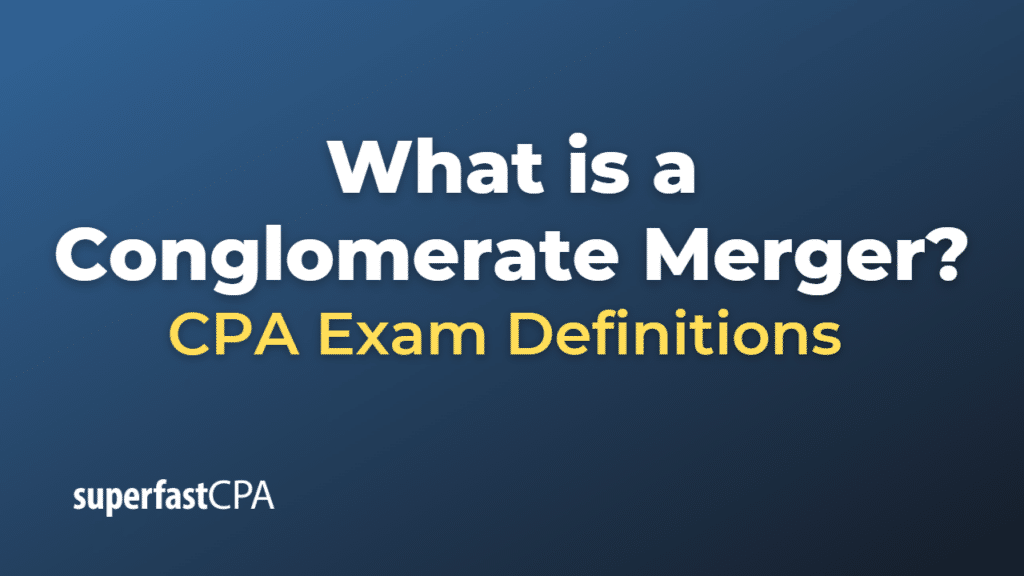Conglomerate Merger
A conglomerate merger is a type of business combination in which two or more companies operating in different industries or sectors join together to form a single, larger corporation. These mergers usually involve companies with unrelated or dissimilar products, services, or markets, and the primary goal is to achieve diversification, risk reduction, or other strategic objectives.
The rationale behind a conglomerate merger can vary, but some common motivations include:
- Diversification: By combining businesses from different industries, a conglomerate merger can help reduce the overall risk of the new entity by spreading it across various sectors. Diversification can protect the company from industry-specific risks, economic downturns, or market fluctuations.
- Growth opportunities: A conglomerate merger can provide access to new markets or customers, enabling the combined company to exploit growth opportunities that may not have been available to each company individually.
- Economies of scale and scope: The merged entity may be able to achieve cost savings and operational efficiencies by sharing resources, such as technology, distribution networks, or management expertise, across its various business units.
- Financial stability: A financially strong company may merge with a struggling company to improve the latter’s financial stability, or a cash-rich company might acquire a company with valuable assets or growth potential.
- Management expertise: A conglomerate merger can help bring together the management expertise of different companies, allowing the new entity to leverage the knowledge and experience of its diverse leadership team.
It’s important to note that conglomerate mergers can also present challenges, such as managing a complex organizational structure, integrating different corporate cultures, and maintaining focus on core competencies. Due to these challenges, some conglomerates eventually choose to divest or spin-off unrelated businesses to streamline their operations and concentrate on their primary industry.
Example of a Conglomerate Merger
Let’s consider the example of the merger between Procter & Gamble (P&G) and Gillette in 2005.
Procter & Gamble, a leading multinational consumer goods company, specializes in a wide range of products, including cleaning agents, personal care items, and beauty products. Some of P&G’s well-known brands are Tide, Pampers, and Pantene.
Gillette, on the other hand, was a leading personal care and grooming products company, best known for its razors and shaving equipment, as well as other products such as oral care and deodorants.
In 2005, Procter & Gamble announced a $57 billion stock-for-stock deal to acquire Gillette, forming one of the largest conglomerate mergers in history. The merger combined P&G’s vast portfolio of consumer goods with Gillette’s market-leading position in personal care and grooming products.
The primary motivations behind the merger were:
- Diversification: The merger allowed P&G to expand its product portfolio by entering new market segments, such as men’s grooming, and diversify its revenue sources.
- Growth opportunities: The combined entity could leverage P&G’s extensive distribution network and marketing expertise to expand Gillette’s product sales in international markets.
- Economies of scale: The merger was expected to generate cost savings and operational efficiencies by consolidating manufacturing, distribution, and research and development efforts.
- Enhanced market position: The merger strengthened P&G’s overall market position in the consumer goods sector, creating a company with a broader range of products and a stronger global presence.
This example of a conglomerate merger between Procter & Gamble and Gillette demonstrates how companies operating in related but distinct industries can come together to achieve diversification, growth, and operational synergies.













